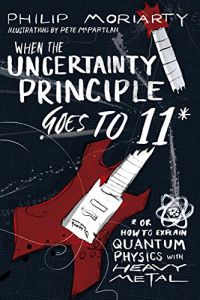Join getAbstract to access the summary!

Join getAbstract to access the summary!
Philip Moriarty
When the Uncertainty Principle Goes to 11
Or How to Explain Quantum Physics with Heavy Metal
BenBella, 2018
What's inside?
In the weird world of molecules, atoms and waves, heavy metal meets quantum mechanics. You may never be the same.
Recommendation
College physics students often wear heavy metal T-shirts featuring Metallica or Iron Maiden. The geeky technical aspects of physics map to heavy metal – those who find one appealing often embrace the other. Physicist and amateur rocker Philip Moriarty’s wonderfully illustrated use of the metal music genre to explain a concept opaque to non-physicists will resonate with metal-loving mathematicians and curious physicists who love Judas Priest. It will also interest students who wonder if they have an affinity for physics.
Summary
About the Author
Philip Moriarty teaches quantum physics at the University of Nottingham and jams in a heavy metal garage band.
















Comment on this summary